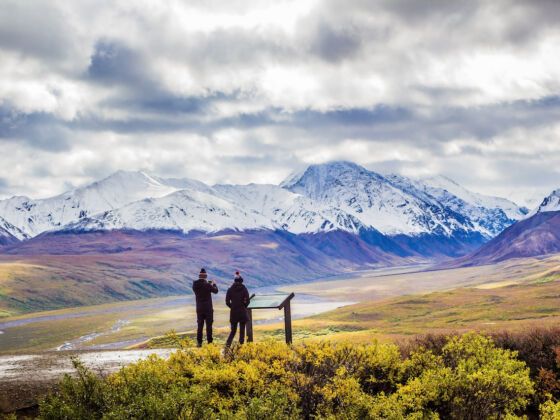If any year is the year to break free of the mundane, it’s this one — and no place in the US can jolt you out of the doldrums like Alaska. With five distinct regions uniting colossal mountains, scarlet-hued tundra, glacial fjords and bays, gold-strewn rivers, and diverse Indigenous cultures, the sights and experiences you’ll encounter in the 49th state are truly unforgettable.
So trade that backyard staycation for something truly extraordinary — here are just a few moments you’ll experience in Alaska this year that will stay with you for a lifetime.
1. Dog sledding through landscapes like this

Photo: State of Alaska/Matt Hage
For thousands of years, Alaskans relied on dogs and dog sleds to transport supplies, carving sledding routes throughout the state. One of these routes, connecting Seward to the Western Arctic, became etched in legend in 1925, when a diphtheria outbreak ravaged the icebound city of Nome. Dangerous weather grounded planes, but dog sled teams made the arduous, nearly 1,000-mile trek to deliver lifesaving medicine. Sound familiar? This event inspired the Iditarod, the most famous sled dog race in the world.
Dog sledding is widely celebrated to this day: From the annual Iditarod to family-friendly, hands-on dog mushing rides around the state — in any season, perhaps beneath the northern lights or even on a glacier — you and the kids can experience this integral part of Alaska history and culture.
2. Finding treasure in the water

Photo: State of Alaska/Matt Hage
Yep, there’s gold in them hills! Russian settlers first found gold in the Kenai River in 1848; by 1870, regular gold mining took place southeast of Juneau, though the famous Klondike Gold Rush wouldn’t happen until 1896. But Alaska’s gilded treasures aren’t just a 19th-century legacy. Today, over 10% of all gold mined in the US comes from the 49th state.
And everyone’s welcome to get in on the action! There are any number of family-friendly gold-panning adventures to choose from, where you’ll get your waders wet in rushing streams and try your hand where 100,000 gold rushers panned for richer destinies. And of course, even if you’re just playing in the water, keep an eye out for something golden glittering in the ripples.
3. Walking across a glacier

Photo: State of Alaska/Mark Kelley
Alaska’s many glaciers can be appreciated near or far, but getting these icy behemoths within arm’s reach makes for a wild, unforgettable adventure. And they’re surprisingly accessible: Everyone from kids to grandparents can walk up to, across, or even climb (with a guide, of course) a number of Alaska’s glaciers, like Matanuska, Exit, and Laughton, just to name a few.
For something even more accessible, consider a flightseeing tour. From an agile helicopter or flightseeing plane, you’ll get to witness the immense size and flowing pathway of the river of ice — a vision not soon forgotten. And for relaxation and ease, you can’t beat day cruises, like to Columbia Glacier in Prince William Sound. With calm, protected waters and constant opportunities to spot wildlife on and off the ice, the experience can feel both peaceful yet imposing, monumental yet serene.
4. Bearing witness to “The Great One”

Photo: State of Alaska/Matt Hage
Compared to Denali, 14ers are child’s play. “The Great One” — the Koyukon-Athabascan meaning of the name — reaches 20,310 feet above sea level, rising over a mile taller, in terms of base-to-summit elevation, than Mount Everest does. This lends the continent’s tallest peak an extra sense of drama: When the clouds part and you catch a glimpse of Denali looming over its much shorter neighbors, expect to literally lose your breath for a moment.
While — on a clear day — you may be able to see Denali from Anchorage, your best bet for scoring this wondrous view is to visit Denali National Park and Preserve. Beyond the peak, there’s so much to take in: spruce forests, subalpine tundra, marshy taiga, braided rivers, shelves of permafrost, massive glaciers, and steep cliffs, all combining to create diverse habitat for grizzly bears, wolves, moose, caribou, and Dall sheep. Spend your unforgettable days wildlife spotting, river rafting, hiking, camping, or flight-seeing. Comfortable backcountry lodges make for easy, unforgettable nights, too.
5. Riding a heritage gold mining train
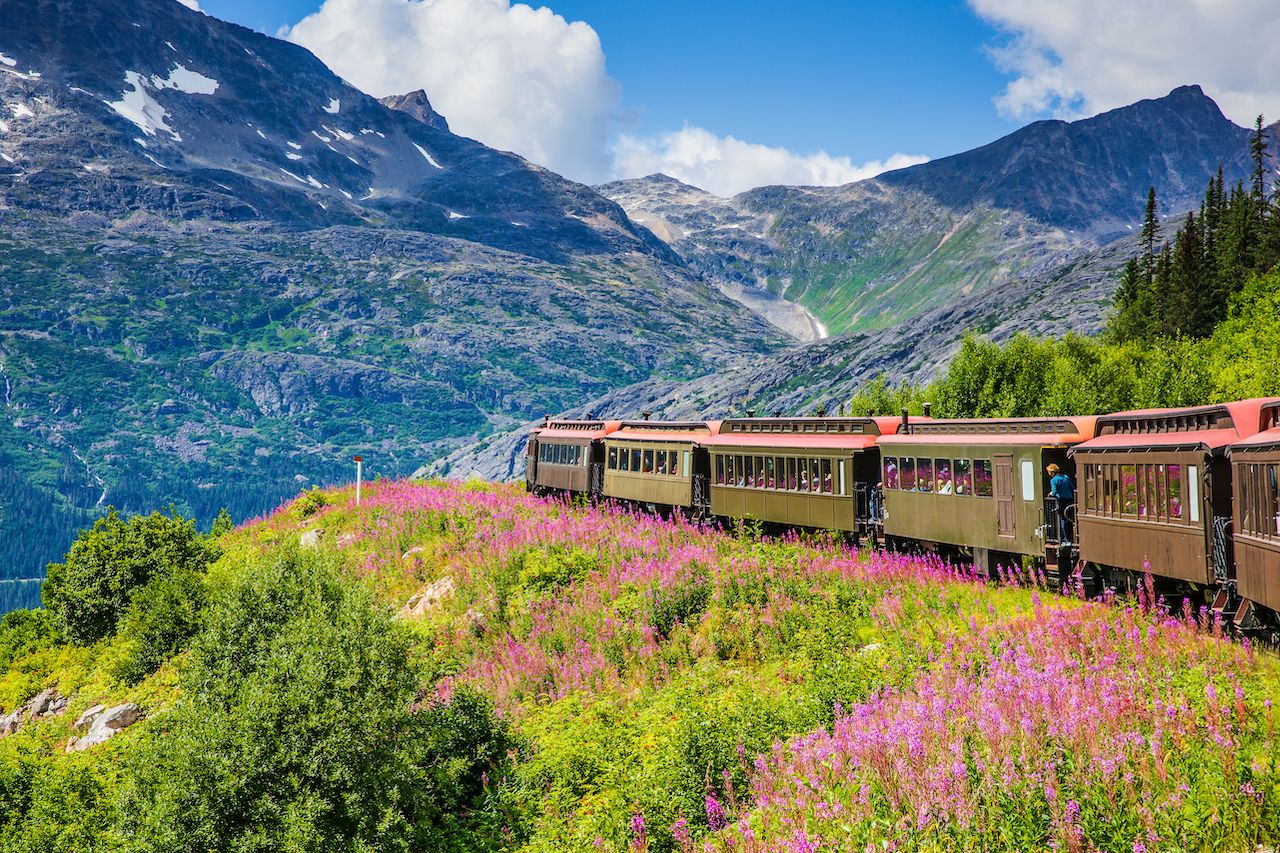
Photo: emperorcosar/Shutterstock
When gold was discovered in Alaska and the Yukon, miners had to haul equipment on foot and by horse up the “Golden Stairs” to the summit of Chilkoot Pass. To remedy this significant obstacle, the White Pass & Yukon Route was constructed from 1898 to 1900, traversing the slightly less steep White Pass. Climbing from sea level in Skagway up to the 2,865-foot pass and all the way to Carcross, in the Yukon, it encompassed numerous tunnels, bridges, and switchback curves, a serious feat of engineering. So was born the “Scenic Railway of the World.”
Today, the WP&YR operates as a heritage railroad — which is to say, travelers need only bring themselves and their passports to reach Carcross via the route’s comfortable vintage train cars. Shorter excursions travel to White Pass summit and back (no passport required), but a trip of any duration gets you incredible views of rugged canyons, waterfalls, rushing rivers, and sky-high peaks, all looking pretty much just as they did 120 years ago.
6. Watching the night sky glow in technicolor ribbons
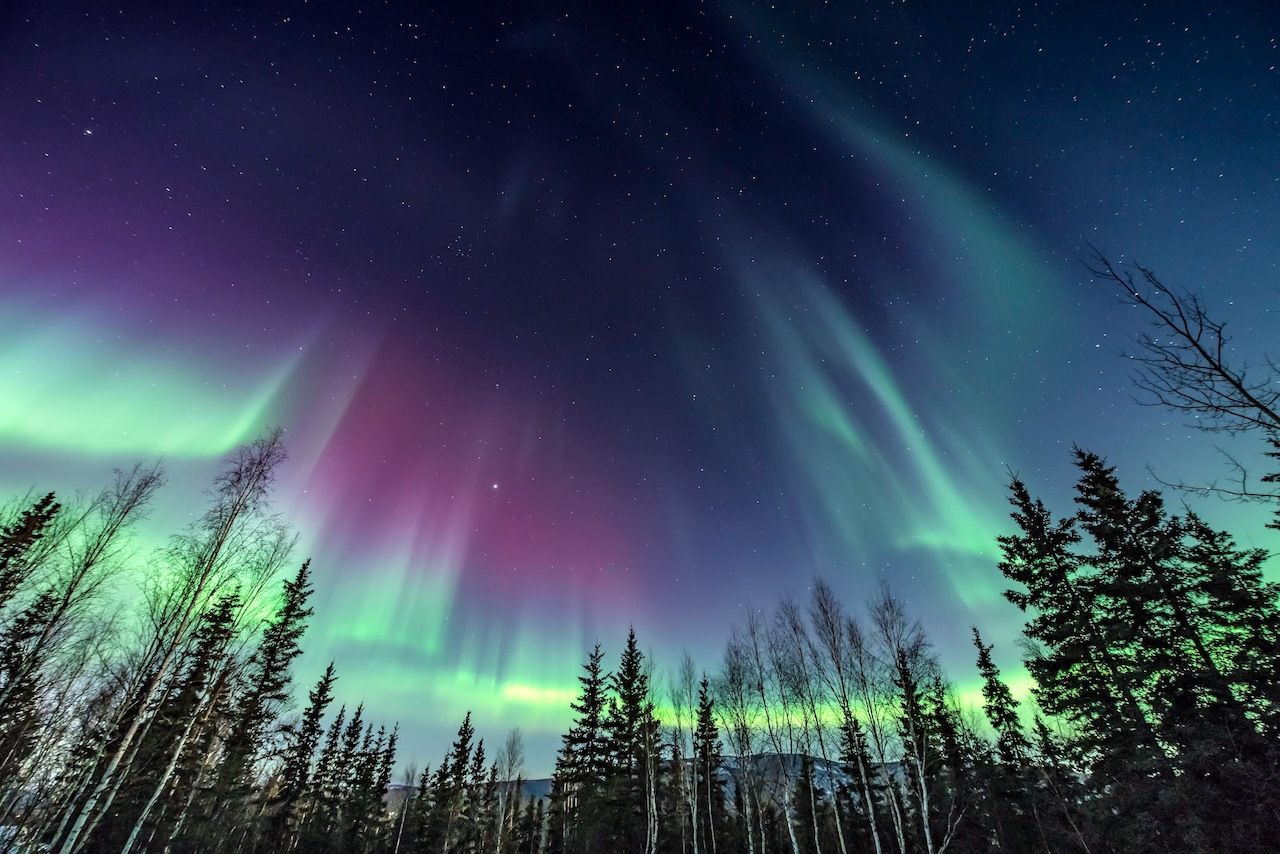
Photo: Beth Ruggiero-York/Shutterstock
Alaska’s northern lights do actually occur year-round — but they’re certainly more difficult to see under summer’s midnight sun. Your best bet for viewing the aurora is between August and April, when it’s darker longer and the air is crisp, making it easier to spot the breathtaking pinks, greens, yellows, blues, and purples as they dance across the night sky.
Fairbanks is touted as one of the best places in the state (if not the world) to view the northern lights, but don’t write off spotting this natural wonder wherever you are — particularly in the Interior and Arctic regions. Hop on a guided tour to increase your odds, as local guides know the best spots, weather trends, and factors to consider for the most colorful outings. (And if your hotel offers it, ask for a northern-lights wakeup call!)
7. Immersing yourself in Alaska Native culture
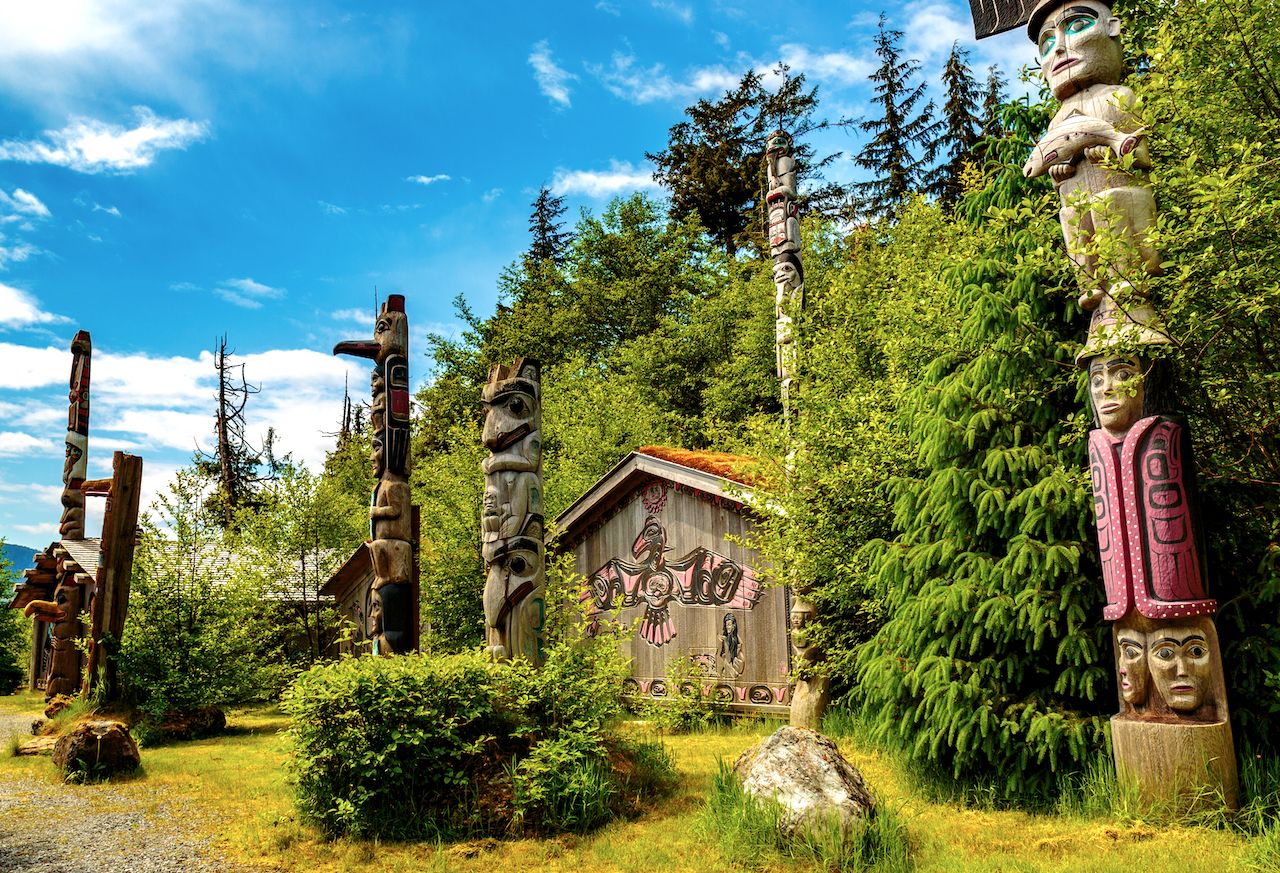
Photo: dshummy/Shutterstock
Alaska’s Indigenous history runs from millennia in the past all the way up through today. The state is home to 229 Federally Recognized Tribes, and each region holds a different confluence of Alaska Native cultures. As you explore, you’ll discover how these traditions and histories blend into the state’s diverse way of life. Start with a little education at places like the Alaska Native Heritage Center (Anchorage) and the Morris Thompson Cultural Center (Fairbanks). Then, here are just a few spots — of hundreds — you could add to your itinerary:
- Just minutes from downtown Sitka in Alaska’s Southeast, Sitka National Historical Park is set on the site of a battle between the Tlingit and Russian soldiers in 1804 and pays tribute to the region’s Tlingit heritage. Walk the Totem Trail to see 18 stunning examples of this Alaska Native artform.
- Kotzebue, west of Kobuk Valley National Park in the Arctic, is one of the state’s oldest Iñupiat villages. Check out the Northwest Arctic Heritage Center for a deep dive into this culture.
- There are six Alaska Native villages on Kodiak Island, and plenty of tours and lodging options are Native-owned or Native-run. Don’t miss the Alutiiq Museum and Archaeological Repository, in the city of Kodiak, for a thorough cultural history of the state’s largest island.
8. Crossing the Arctic Circle

Photo: Senthil Raman/Shutterstock
Just under 200 driving miles north of Fairbanks, there’s an invisible — but powerful — line: the Arctic Circle, 66°33′ north of the equator. Few travelers will ever experience the land of the true midnight sun, but cross that line and you’ll be one of them.
And it’s simple to do. Rent a car or hop on a tour of the Dalton Highway — beginning near Fairbanks and ending all the way up at Deadhorse — and you’ll ceremoniously cross over, celebrating with views of the endless boreal forests and occasionally stopping for caribou. Of course, many trips into the Arctic are made by plane, as there aren’t too many roads up here. And crossing the Circle is just as cool if you do it in the air!
9. Viewing humpback whales in their natural habitat
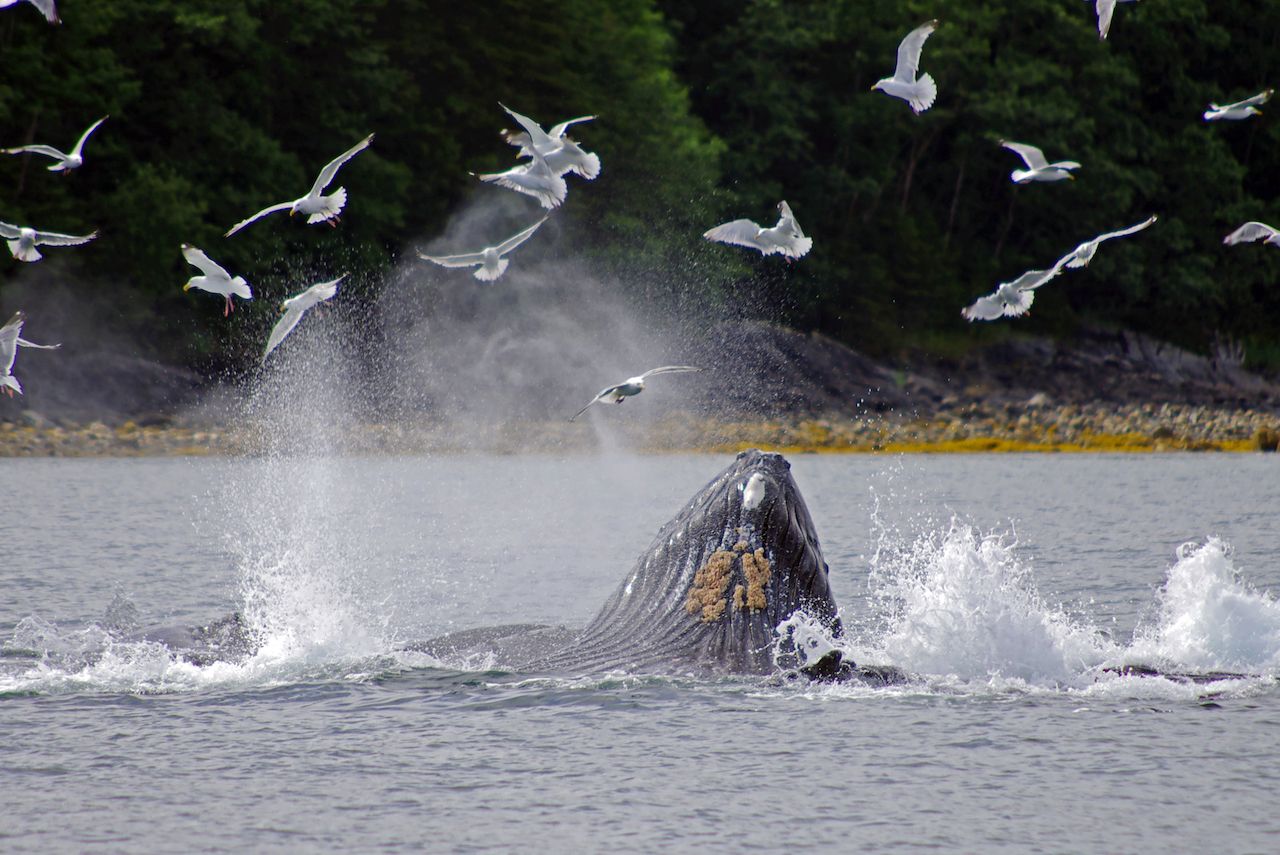
Photo: State of Alaska/Reinhard Pantke
As many as 10,000 humpback whales feed in the waters surrounding Alaska, building up fat stores before migrating toward Hawaii to breed and calve. The state’s Southeast region is a tail-tossing hotspot, but they’ll even go as far north as Utqiaġvik, on the Arctic Ocean, for the right krill buffet.
The best time to watch for these massive mammals is June to August; from April to May, you can try to catch their migration, if you know where to go. Whale-watching tours abound to help you spot a humpback or three, though you could always grab a kayak — or simply go for a stroll along the Homer Spit in Kachemak Bay — and cross your fingers for a whale breach.
10. Exploring the country’s biggest national park
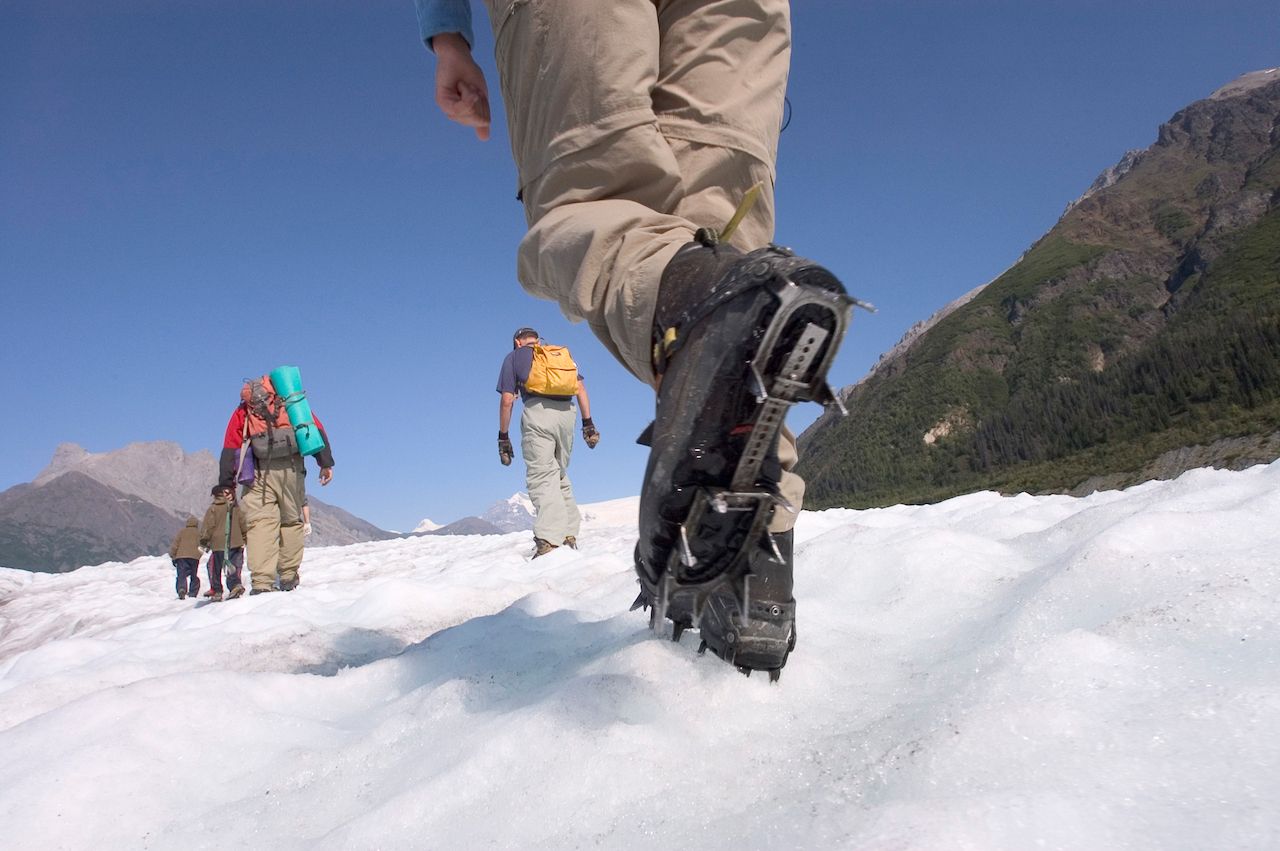
Photo: State of Alaska/Matt Hage
Home to some of the grandest volcanoes, mountains, and glaciers on the continent, the 13.2-million-acre Wrangell-St. Elias National Park and Preserve lets visitors experience an expansive wilderness from sea level up to 18,008 feet. Once you discover that land can be this majestic, this massive, this diverse — you never, ever forget.
Yet, despite the park’s overwhelmingly backcountry feel, you’ll find family-friendly campsites, cabins, hotels, RV sites for the glampers among us, and even luxurious lodges that can make your off-grid expedition an ultra-comfortable one. And you can easily drive from Anchorage to the gateway community of McCarthy and the nearby restored historic mining ghost town of Kennicott. When the sun rises, go on guided tours, hike, float, backpack, fish, or simply be. However you do it, take care of this fragile environment, and make sure to leave no trace.
11. Catching salmon — kind of like the brown bears
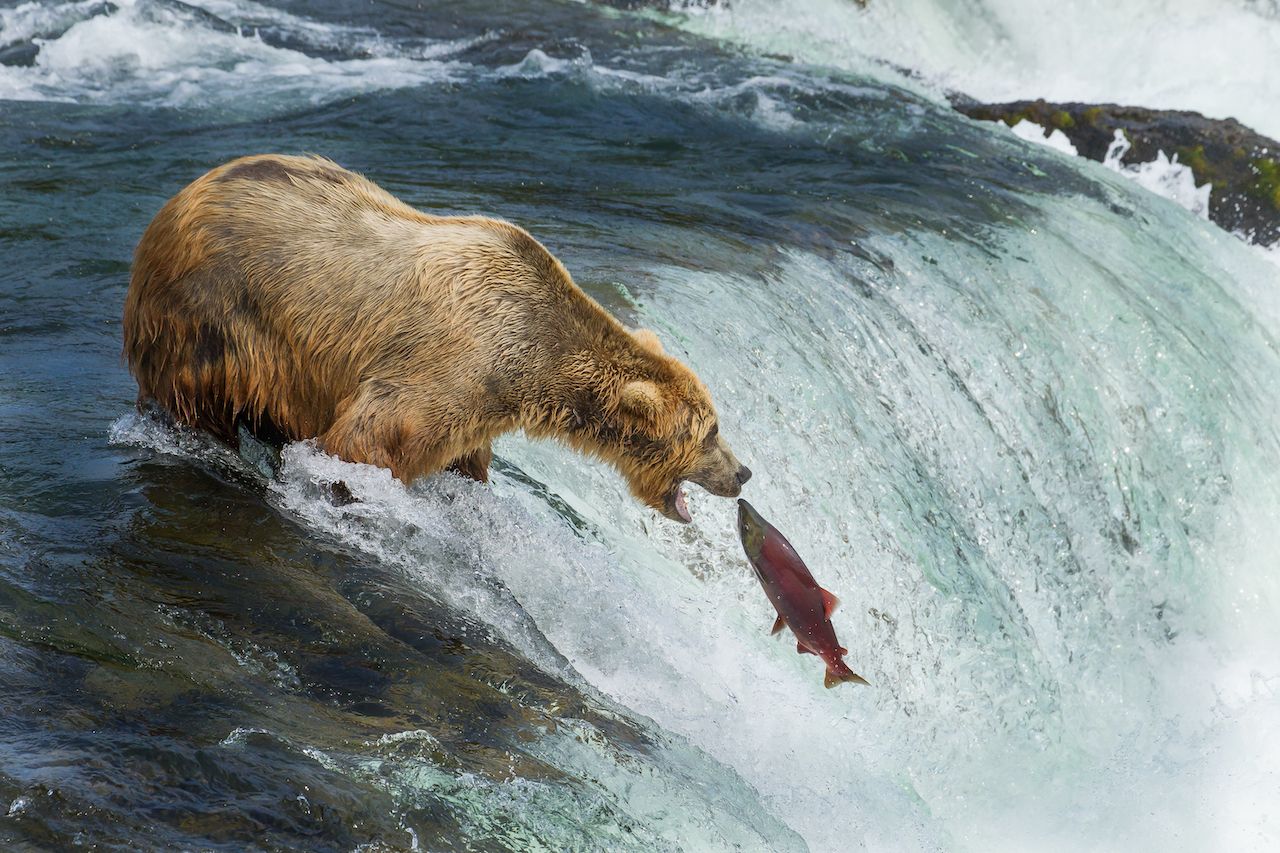
Photo: Rostislav Stach/Shutterstock
While you can’t sit with Katmai’s famous brown bears in the Brooks River, waiting for salmon to fly into your mouth, there’s always the next best thing: fishing for “reds” in Alaska’s Southwest. Bristol Bay has the largest red salmon run in the world, with plenty of king salmon to boot — get set up with a trusty guide in Dillingham to hit the waters.
Meanwhile, trips out of Kenai, Soldotna, and Cooper Landing will get you to the Kenai River and some of the world’s best sockeye salmon fishing from mid-June to early August. Outfitters abound to help make it happen, and maybe you’ll spot a few brown bears doing a little fishing of their own! You could also challenge your sea legs on a halibut charter out of Seward or Homer. Just remember: In the moments between bites, keep your eye on the horizon, concentrating on that view. It’ll be unforgettable.

